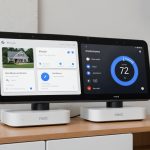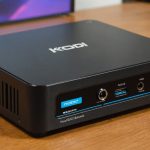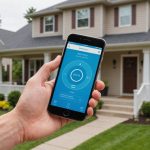Maximize Your Home’s Safety: A Comprehensive Guide to Setting Up a Smartphone-Connected Water Leak Detection System
Why You Need a Water Leak Detection System
In the hustle and bustle of daily life, it’s easy to overlook the potential dangers lurking in the shadows of our homes. One of the most significant threats to your home’s integrity and your wallet is water damage caused by leaks. According to various studies, water leaks can result in thousands of dollars in damage, not to mention the stress and inconvenience of dealing with the aftermath. This is where a smartphone-connected water leak detection system comes into play.
“A water leak detection system is not just a luxury, it’s a necessity in today’s smart home era,” says a homeowner who recently installed such a system. “It gives me peace of mind knowing that I’ll be alerted immediately if there’s any issue with water leaks in my home.”
In the same genre : Master the art of daily reflection: a step-by-step guide to creating a digital journal on your tablet
How Water Leak Detection Systems Work
These systems are designed to detect even the slightest presence of water where it shouldn’t be, alerting you in real time through your smartphone or other connected devices.
Key Components of Water Leak Detection Systems
- Sensors: These are the heart of any water leak detection system. They can be placed in areas prone to leaks, such as under sinks, near water heaters, and around washing machines. Advanced sensors can detect water levels as low as 0.5 mm[3].
- Hub or Central Unit: This is the brain of the operation, connecting all the sensors and sending alerts to your smartphone or other devices. Some systems, like the SwitchBot Water Leak Detector, do not require a hub and can connect directly to your Wi-Fi network[3].
- App and Notifications: The app is where you receive real-time alerts and can monitor the status of your home’s water usage. Many systems offer multiple types of alerts, including sound, app notifications, Alexa voice alarms, and emails[3].
Choosing the Best Water Leak Detector for Your Home
With so many options available, selecting the right water leak detector can be overwhelming. Here are some key factors to consider:
Also to discover : Revolutionizing fitness tracking on smartwatches: cutting-edge methods for improved accuracy
Features to Look For
- Connectivity: Ensure the system can connect to your smartphone via Wi-Fi or Bluetooth. Some systems also integrate with smart home platforms like Google Assistant[3].
- Sensor Accuracy: Look for sensors that can detect minimal amounts of water and provide accurate readings.
- Alert Mechanisms: Opt for a system that offers multiple alert mechanisms to ensure you’re always informed.
- Ease of Installation: Choose a system that is easy to set up and does not require extensive technical knowledge.
- Compatibility: Ensure the system is compatible with your existing smart home devices.
Top Water Leak Detection Systems Compared
Here is a comparison of some of the best water leak detection systems available in the market:
| System | Connectivity | Sensor Accuracy | Alert Mechanisms | Ease of Installation | Compatibility |
|---|---|---|---|---|---|
| Grohe Sense | Wi-Fi | High | App notifications, emails | Moderate | Smart home platforms |
| SwitchBot Water Leak Detector | Wi-Fi, Bluetooth | High | App notifications, sound, Alexa voice alarms, emails | Easy | Google Assistant |
| Sinopé Water Leak Detector | Wi-Fi | High | App notifications, emails | Moderate | Smart home platforms |
| GROHE Sense Guard | Wi-Fi | High | App notifications, automatic valve closure | Complex | Smart home platforms |
Setting Up Your Water Leak Detection System
Setting up a water leak detection system is relatively straightforward, but here are some steps to ensure you do it correctly:
Step-by-Step Installation Guide
- Choose the Right Locations: Place sensors in areas where leaks are most likely to occur, such as under sinks, near water heaters, and around washing machines.
- Connect the Sensors: Connect the sensors to the central unit or hub according to the manufacturer’s instructions.
- Download and Configure the App: Download the app associated with your system and configure it to receive notifications.
- Test the System: Test the system to ensure it is working correctly and that you are receiving alerts as expected.
Practical Tips for Maximizing Your System’s Effectiveness
Here are some practical tips to get the most out of your water leak detection system:
Regular Maintenance
- Regularly check the sensors to ensure they are clean and free from debris.
- Update the app and firmware of your system to ensure you have the latest features and security patches.
Strategic Placement
- Place sensors in hidden areas where water might accumulate, such as behind appliances and under flooring.
- Consider placing sensors in outdoor areas, such as near garden hoses or swimming pools, to detect any outdoor leaks.
Integration with Other Smart Home Devices
- Integrate your water leak detection system with other smart home devices to create a comprehensive home security system.
- Use voice assistants like Google Assistant to receive voice alerts and control your system hands-free[3].
Real-Life Benefits and Success Stories
Here are a few real-life examples of how these systems have saved homeowners from significant water damage:
- “I was on vacation when my washing machine sprang a leak. Thanks to my water leak detection system, I received an alert on my smartphone and was able to call a neighbor to turn off the main water supply. It saved me from thousands of dollars in damage,” says a grateful homeowner.
- “I installed a water leak detection system after experiencing a minor leak under my sink. Now, I have peace of mind knowing that I’ll be alerted immediately if anything goes wrong,” adds another homeowner.
Frequently Asked Questions
What is the average cost of a water leak detection system?
The cost can vary widely depending on the features and the number of sensors. On average, a basic system can start from around $50, while more advanced systems with multiple sensors and features can cost upwards of $200.
Do I need to be tech-savvy to install a water leak detection system?
No, most systems are designed to be user-friendly and do not require extensive technical knowledge. However, some more advanced systems might need a bit more setup.
Can I integrate my water leak detection system with other smart home devices?
Yes, many water leak detection systems are designed to integrate with other smart home devices and platforms like Google Assistant, making it easy to create a comprehensive smart home security system.
Investing in a smartphone-connected water leak detection system is one of the smartest decisions you can make for your home’s security and integrity. With the right system, you can prevent significant water damage, save money, and enjoy peace of mind knowing that your home is protected.
As you prepare to set up your own system, remember to choose a system that fits your needs, follow the installation guide carefully, and maintain your system regularly. Whether you’re a tech enthusiast or just looking to enhance your home’s security, a water leak detection system is an essential addition to any smart home.
And as a final tip, keep an eye out for Black Friday deals, where you might be able to snag a top-notch water leak detection system at a discounted price. Happy shopping and stay safe






